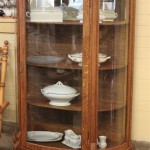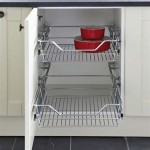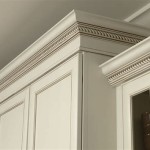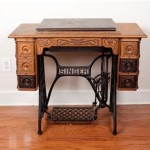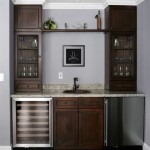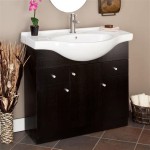Cabinet Hanging Tips
Hanging cabinets securely and accurately is crucial for both aesthetics and functionality in a kitchen or bathroom. Proper installation ensures the cabinets withstand daily use and maintain their appearance. This article provides a comprehensive guide to achieving professional-looking results when hanging wall cabinets.
Planning and Preparation
Before beginning the installation process, careful planning and preparation are essential. This preliminary stage sets the foundation for a smooth and successful cabinet hanging project.
- Check for Level and Plumb: Walls are rarely perfectly level or plumb. Use a level and plumb bob to identify any deviations and mark them accordingly. These markings will be crucial during the installation process to ensure the cabinets are hung straight.
- Locate Studs: Use a stud finder to precisely locate and mark the wall studs. Cabinets should be anchored securely to the studs for maximum stability. Knowing their location beforehand prevents guesswork during installation.
- Mark Cabinet Positions: Based on the design plan, carefully mark the desired location of each cabinet on the wall. Consider factors such as appliance placement, countertop height, and traffic flow when determining cabinet positioning.
- Measure and Mark Hanging Rails: If using a hanging rail system, measure and mark the position of the rail on the wall. Ensure the rail is level and at the correct height for the cabinets. The rail provides a continuous support system, especially useful for multiple cabinets.
- Gather Necessary Tools and Materials: Assemble all the required tools, including a drill, level, stud finder, screwdriver, measuring tape, pencil, safety glasses, and appropriate screws. Having everything readily available streamlines the installation process.
Installing Hanging Rails (If Applicable)
Hanging rails offer a secure and streamlined method for installing multiple cabinets, particularly in situations where perfect wall alignment is challenging.
- Securely Mount the Rail: Use appropriate screws to attach the hanging rail to the wall studs. Ensure the rail is level and securely fastened, as it will bear the weight of the cabinets. Countersinking screws provides a flush surface.
- Double-Check Rail Placement: Verify the rail's position and levelness after mounting. Adjustments are easier to make before hanging the cabinets.
Hanging Individual Cabinets
Whether using a hanging rail or securing cabinets directly to the wall, precision and care are crucial for proper installation.
- Pre-Drill Screw Holes: Pre-drilling screw holes in the cabinet backs prevents splitting the wood and ensures a clean, secure attachment. Use a drill bit slightly smaller than the screw diameter.
- Position and Secure the First Cabinet: Carefully lift the first cabinet into position, ensuring it aligns with the marked lines and the hanging rail (if applicable). Use appropriate screws to secure the cabinet to the studs or the hanging rail brackets.
- Check for Level and Plumb: After securing the first cabinet, double-check its level and plumb alignment. Minor adjustments can be made at this stage. This step is critical as subsequent cabinets will be aligned to the first.
- Hang Remaining Cabinets: Repeat the process for each subsequent cabinet, carefully aligning them with the previously installed cabinet and securing them to the wall or hanging rail. Use shims as needed to achieve perfect alignment.
- Secure Cabinets Together: Once all cabinets are hung, secure them together using clamps and screws. This creates a unified and stable structure, preventing gaps and movement between cabinets.
Finishing Touches
After the cabinets are securely hung, the final steps focus on completing the installation and ensuring a polished appearance.
- Install Doors and Hardware: Attach the cabinet doors and install any remaining hardware, such as handles and knobs. Ensure proper alignment and functionality of the hardware.
- Caulk and Seal Gaps: Apply caulk to any gaps between the cabinets and the wall to create a seamless, finished look. This also helps prevent moisture and dust from entering behind the cabinets.
- Clean Up: Remove any dust, debris, or leftover materials from the installation area. This final step leaves the space clean and ready for use.
Working with Corner Cabinets
Corner cabinets require special consideration due to their unique shape and positioning. Careful planning and execution are essential for a successful installation.
- Precise Measurements: Accurate measurements of the corner space are crucial for proper fit. Consider adjacent cabinets and appliances when determining the corner cabinet's placement.
- Leveling and Support: Ensure adequate support and leveling for corner cabinets, as they often bear additional weight and stress. Shimming may be necessary to achieve proper stability.
- Connecting to Adjacent Cabinets: Carefully connect the corner cabinet to adjacent cabinets using screws and clamps. This creates a unified structure and ensures a seamless transition between cabinets.

11 Professional Kitchen Cabinet Installation Tips To Increase Efficiency
How To Hang Cabinets On Wall Like A Pro Tips And Tricks Maxave

11 Professional Kitchen Cabinet Installation Tips To Increase Efficiency

11 Tricks For Perfect Kitchen Cabinets

6 Tips For Kitchen Cabinet Installation

6 Tips For Kitchen Cabinet Installation

Step By Guide To Installing Kitchen Cabinets Diy Cabinetcorp

How To Install Wall Cabinets The Home Depot

Hanging Cabinets Projects By Zac

How To Install Kitchen Cabinets Diy Family Handyman
Related Posts


